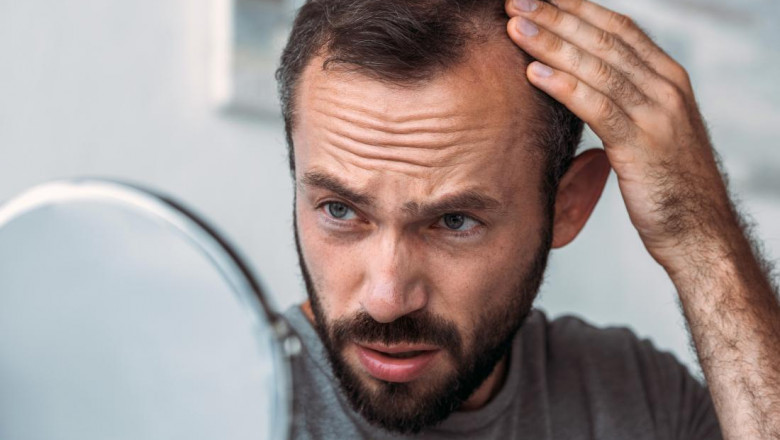views
Hair loss affects millions of individuals worldwide, often causing distress and impacting self-esteem. Among the various treatment options available, Finasteride For Hair Loss in Dubai has emerged as a highly effective solution for hair regrowth, particularly for men experiencing androgenetic alopecia (male pattern baldness). However, one common question persists: how long should you use Finasteride for optimal hair growth? This article delves into the timelines, effectiveness, and factors influencing the duration of Finasteride use.
What is Finasteride?
Finasteride is an oral medication approved by the FDA for treating hair loss in men. It works by inhibiting the enzyme 5-alpha-reductase, which converts testosterone into dihydrotestosterone (DHT). Elevated levels of DHT are responsible for shrinking hair follicles and causing hair loss. By reducing DHT levels, Finasteride helps maintain existing hair and stimulates regrowth in some individuals.
When Does Finasteride Start Working?
Hair growth is a gradual process, and patience is key when using Finasteride. Most users report noticeable results within 3 to 6 months, but the medication's effects can vary depending on factors such as genetics, age, and the severity of hair loss.
- Month 1-3: Little to no visible change. You might notice a temporary increase in shedding, which is normal and indicates that weaker hairs are making way for stronger ones.
- Month 4-6: Hair shedding typically stabilizes, and some users begin to see early signs of regrowth. Hair texture and thickness may also improve.
- Month 6-12: Significant improvements in hair density and coverage are often evident within this period.
The Recommended Duration of Finasteride Use:
Short-Term Use: Is It Effective?
Finasteride is not a quick fix for hair loss. Short-term use (less than six months) may not yield visible results as the hair growth cycle requires time to show improvement. Additionally, discontinuing Finasteride prematurely can reverse any progress made.
Long-Term Use: The Gold Standard:
For sustained results, Finasteride needs to be taken indefinitely. The effects of Finasteride are only maintained as long as the medication is consistently used. Studies suggest that continuous use for one to two years is essential to achieve and stabilize optimal hair growth. After this period, many users experience a plateau where hair loss is under control, but further significant regrowth might not occur.
What Happens If You Stop Using Finasteride?
If Finasteride use is discontinued, DHT levels in the scalp will gradually return to their pre-treatment levels. This can lead to the resumption of hair loss, often within 3 to 6 months after stopping the medication. Over time, hair loss may progress to its natural pattern without intervention.
Factors Influencing the Duration of Finasteride Use:
Severity of Hair Loss:
Individuals with early-stage hair loss may achieve satisfactory results sooner and might require maintenance doses for a longer duration to preserve gains. Conversely, those with advanced hair loss may need extended use to see substantial improvement.
Age:
Younger individuals often respond better to Finasteride, as they are more likely to have active, functioning hair follicles. Older individuals might experience slower or less pronounced results, influencing the duration of use.
Genetic Predisposition:
Your family history of hair loss plays a significant role in determining how effective Finasteride will be and how long you might need to take it.
Monitoring Progress: When to Reassess?
Regular Check-Ins with a Specialist:
It's crucial to consult a dermatologist or hair specialist regularly while using Finasteride. They can monitor your progress and adjust your treatment plan as needed.
- After 6 Months: Evaluate initial results. If no improvement is observed, a specialist might recommend adjunct therapies such as minoxidil or low-level laser therapy.
- After 12 Months: Significant progress should be visible. If not, a comprehensive reassessment of your hair loss treatment strategy is warranted.
- Every 6-12 Months Thereafter: Periodic evaluations ensure the treatment remains effective and side effects are managed.
Combining Finasteride with Other Treatments:
For enhanced results, Finasteride can be combined with other treatments:
- Minoxidil: A topical solution that stimulates hair growth and complements Finasteride.
- Low-Level Laser Therapy (LLLT): A non-invasive option to boost hair regrowth.
- Hair Transplants: For advanced hair loss, combining Finasteride with surgical options can yield dramatic results.
Combining therapies often reduces the time required to see visible results while improving overall outcomes.
Are There Risks to Long-Term Use?
While Finasteride is generally well-tolerated, long-term use can be associated with side effects such as:
- Sexual Dysfunction: Decreased libido or erectile dysfunction, affecting a small percentage of users.
- Mood Changes: Rare reports of depression or anxiety.
- Breast Tenderness or Enlargement: Uncommon but possible.
Discuss any concerns with your doctor. Adjusting the dosage or exploring alternative treatments may alleviate side effects.
How to Maximize the Benefits of Finasteride:
Stay Consistent:
Finasteride For Hair Loss must be taken daily to maintain its effectiveness. Missing doses or inconsistent use can hinder progress.
Manage Expectations:
While Finasteride can slow hair loss and promote regrowth, it might not restore hair completely to its original density. Setting realistic expectations ensures satisfaction with the results.
Combine Healthy Habits:
A balanced diet, regular exercise, and stress management can improve overall hair health and enhance the effects of Finasteride.
Final Thoughts:
The duration of Finasteride use depends on individual goals and circumstances. For most individuals, long-term use is necessary to maintain results and prevent hair loss from progressing. Regular consultations with a specialist and combining Finasteride with complementary treatments can optimize outcomes. While it requires commitment and patience, the rewards of consistent use often justify the effort for those seeking to regain confidence and a fuller head of hair.






















Comments
0 comment